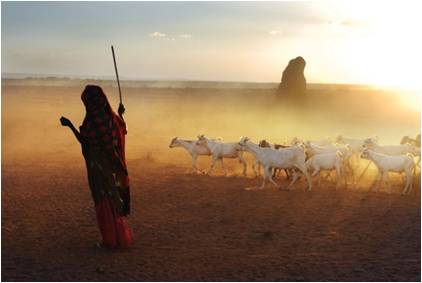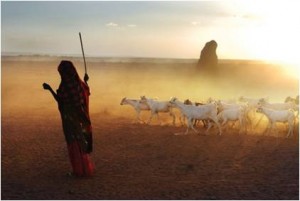
Climate Change: The Missing Link in Tackling the Mali Crisis
 The drums of war are beating loudly in northwest Africa. Over the last year, after a March coup d’état in the Malian capital of Bamako, the country has slipped towards failed-state status. The chaos in Bamako in the country’s south led to a vacuum in the country’s north. There are growing fears that al Qaeda-linked groups are moving to fill that vacuum. Today, military and security experts are beginning planning an intervention in Mali, to be led by regional militaries.
The drums of war are beating loudly in northwest Africa. Over the last year, after a March coup d’état in the Malian capital of Bamako, the country has slipped towards failed-state status. The chaos in Bamako in the country’s south led to a vacuum in the country’s north. There are growing fears that al Qaeda-linked groups are moving to fill that vacuum. Today, military and security experts are beginning planning an intervention in Mali, to be led by regional militaries.
But, before the world rushes to intervene, planners should consider the sources of insecurity.
One of the major underlying drivers of conflict in this region is climate change. Since 2006, America’s generals and strategic planners have been calling climate change a “threat multiplier” or an “accelerant of instability.” Just two weeks ago, on November 1, the American Security Project released its Climate Security Report which detailed how climate change is harming American and global security. Today’s conflict in Mali is a prime example of that threat. A changing climate should be considered as a driving force that has allowed the coup and the rise of terrorist organizations.
This has important implications for planners. A military intervention may be able to restore stability in Mali but climate change will continue to increase instability among the country’s poor as agricultural yields decrease and water shortages become the norm. Mali is already among the 10 poorest countries in the world; climate change is exacerbating this poverty and insecurity.
The underlying pressure from climate change means that military action will not be sufficient to tackle the problems Mali faces; a humanitarian and political agenda must work in tandem with military action to tackle the effects of climate that exacerbate instability across the region.
Climate change is the missing link to understanding the Mali crisis – it is not merely a peripheral issue. Today’s crisis in Mali is the perfect example of how climate change acts as a “threat multiplier” by exacerbating pre-existing tensions or trends.
Northern Mali and the surrounding Sahel region are burdened by chronic droughts. Nearly 15 million people in Mali are farmers or herders whose livelihoods are threatened as rivers shrink, fertile land turns to desert and insect infestations become more prevalent. We see that the effects of a changing climate are pushing thousands of people out of their villages towards urban centers and squeezing natural resources to their limits. This exacerbates existing tensions.
Climate change did not cause the coup or conflict: people start wars, not the weather. But, it certainly exacerbated existing feelings of anger and resentment in Mali. The Tuaregs, a traditionally nomadic group of herders who rely heavily on the land for their livelihood, have led the armed rebellion. They have been deeply affected by the changing climate. The Tuaregs have been calling for separation from the south for over two decades but have not been successful until recently. Climate change has strengthened, multiplied, and accelerated this already existing tension.
The government’s inability to confront the underlying issues led to greater threats and instability. The flow of heavy weapons from Libya into Mali was the most likely proximate cause of the successful uprising, but the roots of the tension come from the endemic poverty caused by a changing climate and the government’s lack of action. As thousands lack basic resources such as food and water, the Al Qaeda in the Islamic Maghreb (AQIM) offers the hope of stability to those looking for something more than poverty and hunger. This poses a direct threat to U.S. interests.
Understanding the effects of climate change in the Sahel region will be a key part of preparing an international response to the crisis.
The bottom line is that climate change didn’t cause the problems in Mali. However, it is an underlying factor that will prevent a long-term resolution unless it is addressed. Preparing for climate change must be an integral part of planning for a stable Mali in the future.
You can find more about Mali here.






[…] Climate Change: The Missing Link In Tackling the Mali Crisis […]
[…] government. As rivers dried up and agricultural production suffered, Al-Qaeda-linked militants capitalized on instability and overthrew the government in 2012. We cannot say that climate change has caused […]
[…] government. As rivers dried up and agricultural production suffered, Al-Qaeda-linked militants capitalized on instability and overthrew the government in 2012. We cannot say that climate change has caused […]
[…] also cited the experience in Mali, where drought forced the Tuaregs to migrate. The instability from drought and internal migration […]